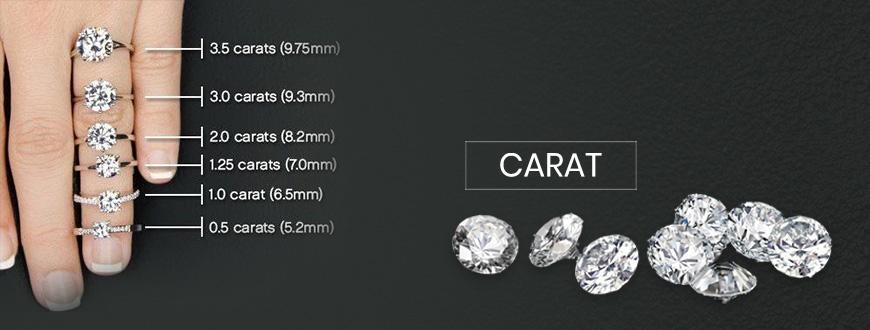Kalyan Wiki

carat
Carat is the unit used to measure the weight of diamonds and other precious gemstones like pearls, rubies, sapphires, emeralds, topaz, garnets etc. The standard weight of 1 carat is 200 milligrams. Carat should not be confused with karat. Although they sound similar, karat is a unit used to measure the purity of gold and is often depicted as 18k, 20k, 24k etc. The word carat was derived from a Greek word that meant ‘carob seeds’. In earlier times, gemstones were measured using these seeds, but this technique was full of flaws since the weight of each seed differed. The measure of a carat varied from place to place which made it difficult to trade gemstones between borders. Thus, a need for an internationally accepted standard for gemstones arose at this point. In October of 1907, a carat of 200 milligrams was proposed and accepted by The International Committee of Weights and Measures, officially at Paris. Although the definitive mass of 1 carat was decided, it took time to be accepted all over the world. The United States standardized it in 1913, while The United Kingdom accepted carat in 1914. The term is abbreviated as ‘CD’. A flawless diamond weighing 100 carats or more without inclusions is considered to be perfect and is called a paragon. The Bahia Emerald is the largest single stone found weighing a whopping 1.9 million carats. The Chaiyo Ruby, which is said to be from Africa, weighs 109,000 carats and claims its throne as the largest ruby stone found. Various other large gemstones are the Guinness Emerald (1759 carats), the Star of Adam Blue Star Sapphire (1404 carats), the Letseng Diamond (910 carats) etc. The price of any gemstone is directly proportional to its weight in carats. Purchasing a diamond or a gemstone depends upon the weight of the jewelry as a base. Carat is one of the ‘four C’s that decides the price of a gem and is an important factor to be considered while purchasing precious stones.







